New Projects Explore Ways of Making Plastic
Businesses and scientific researchers are to join forces to explore new methods of recycling plastics under an ambitious UK government programme.
The team will make up the Plastics Waste Innovation Hub being established at University College London alongside research into breaking down plastics into reusable material by introducing bacteria into recycling technology.
The operation is one of eight government projects to discover new ways of making, using and recycling plastics beginning in 2019.
The projects, supported with £8m ($10.1m, €8.8m) of government money, will investigate alternatives to fossil-based materials for producing plastic and will analyse the intricacies of the life cycle of plastic materials.
Researchers at eight universities will focus on the needs and behaviours of businesses and consumers and the use of technologies to reclaim discarded plastic. Their efforts could radically change the manufacture of plastics and the way business handles them.
The work is in line with the wider Bioeconomy Strategy though which the government aims to cut production of carbon-intensive goods, including plastics, and improve ethical standards in their use. The simple message to business is to “use, re-use and recycle”.
One of the projects, at Hull University, will concentrate on developing biodegradable polymers. Specialists hope to produce new materials that can be put to other uses after disposal, but will not clutter the environment for hundreds of years un-degraded if they are discarded.
Another project, at Manchester University, will develop graphene filters to remove tiny pieces of plastic from water and will devise a chemical method of recycling contaminated and mixed soft plastic materials.
Sifting fragments out of water could contribute to present attempts to rid the oceans of plastic, a form of pollution that has posed a particularly intractable problem.
Other projects in the programme will be at Cambridge, Exeter and Sheffield Universities, Imperial College London and Queen’s University Belfast.
Professor Duncan Wingham, head of plastics undertakings at UK Research and Innovation, the government body that directs research funding and oversees a £7bn-plus budget, said: “These eight multidisciplinary research projects will lead the way in finding new solutions to our current use of plastics, through recycling methods and developing alternative materials.
“UK Research and Innovation is drawing UK researchers together with companies to address the challenge of reducing plastic waste entering the environment and creating an economy that is free from plastic waste.”
Science Minister Chris Skidmore, who announced the programme, said: “We have all seen the devastating effects that plastic waste has on our environment, threatening the biodiversity of our oceans and introducing micro-plastics into the food chain.
“We are committed to tackling this problem, from developing plastic-eating bacteria to finding new ways to recycle.
“These projects have the potential to lead us to a cleaner, greener economy but also ensure the UK is at the forefront of the latest innovations and products that will be in high demand across the world through our modern Industrial Strategy [an overall government plan to boost productivity, create jobs and increase earning power].”
The plastics research programme is accompanied by another government strategy that includes imposing a legal duty on producers of harmful waste and the creation of a deposit return scheme to accelerate the recycling of single-use drinks containers.
Earlier in 2018 the government earmarked £60m for research into more sustainable packaging. One objective will be to make packaging out of waste from farming, food production and industrial processes.
Purpose-Led Brands Take the Lead in Business
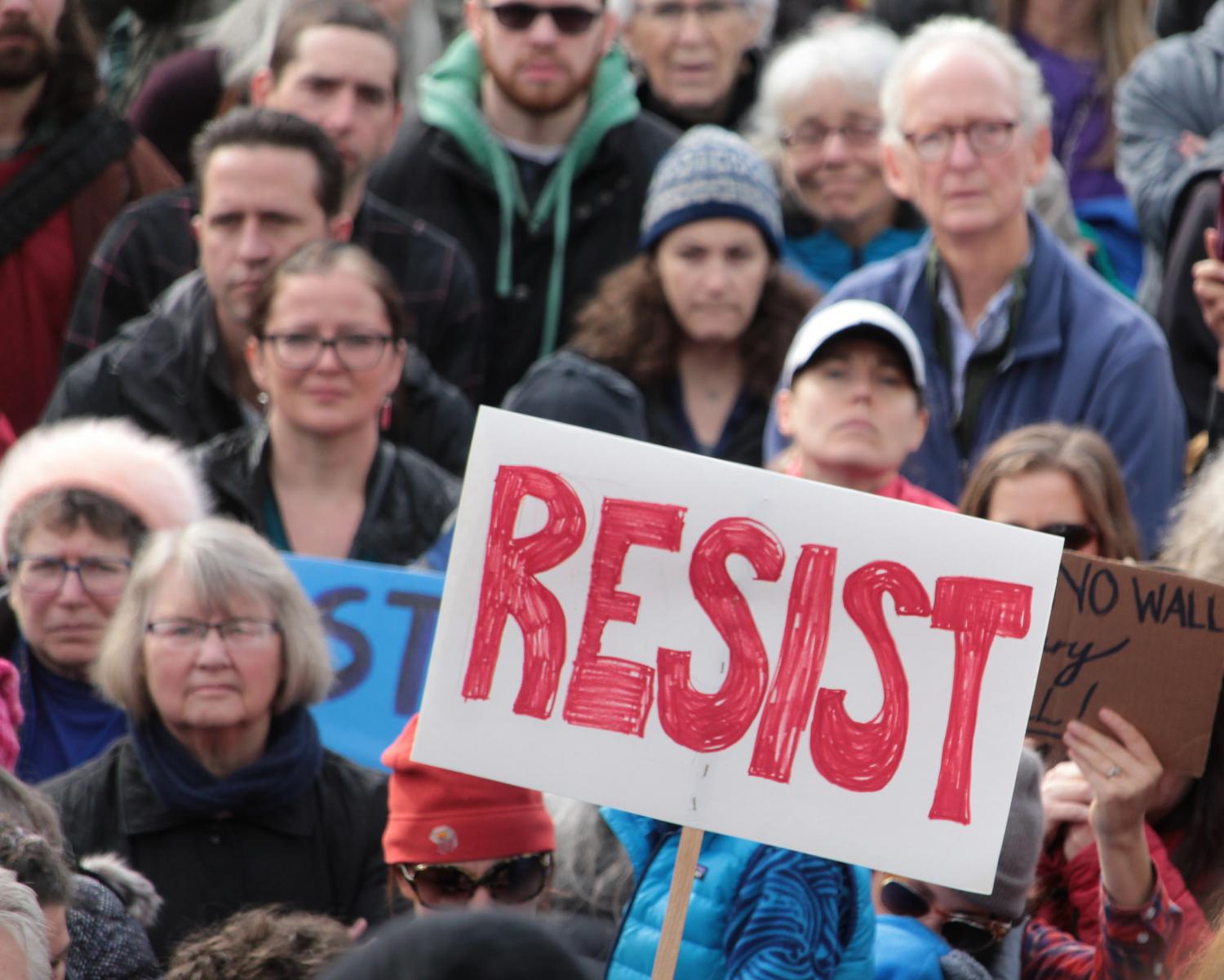
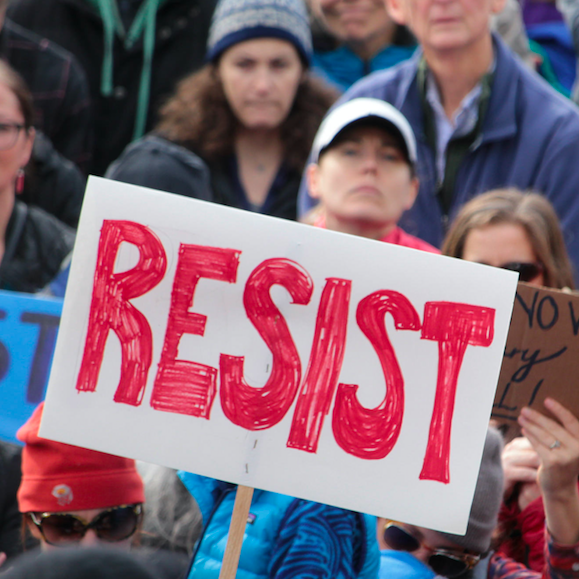
The bottom line in the growing brands taking stands movement - it's time for companies to stand up to stand out.
A friend of mine in financial services has always referred to the corporate responsibility, sustainability, and ESG (environmental, social and governance) field as “values business.” He did not mean it as a compliment—more of a condescending aside. In his view of the money world, “value” equates with valuation: hard numbers at the bottom line, stock price, and ROI. That definition implies the widest universe of possible profits, rather than a slice of revenue from a limited activity within it.
That was then, this is now. In the last three years, he has been inquiring for more details about what seems to be happening to the traditional view of transactional economics that has always described fundamental business philosophy—you know, that Milton Friedman dictum of profit as the be-all, end-all “social responsibility” of any for-profit company.
What’s shaking things up for this long-time financier and his ilk are the unmistakable signs of a surge in companies that point to an expanded sense of purpose as part of the profit equation.
Driving home the credibility of this movement to the reality-by-the-numbers folks, more in-depth research is starting to emerge that proves the point. The latest evidence comes via a research report from Accenture, “From Me to We: The Rise of the Purpose-led Brand.” The report’s basic findings confirm that Brands Taking Stands is gathering force as a North Star in navigating the increasingly stormy waters of business in 2019 and beyond.
Key takeaways:
- Consumers in the United States are no longer making decisions based solely on product selection or price; they’re assessing what a brand says, what it does, and what it stands for. They support brands whose purpose aligns with their beliefs. And they reject those that don’t, with one in five walking away forever.
- Consumers’ expectations that brand purpose will align with their values pose a challenge for U.S. companies. But expectations for brand purpose also present an opportunity for companies to build more differentiated, authentic, and profitable relationships.
- U.S. companies that stand for something bigger than what they sell, tune into customers’ beliefs, and take decisive action on issues can recast their customer relationships and connect with consumers on a deeper level.
The bottom line: “Stand up to stand out.”
These are the report’s qualitative findings. It’s easy to read between the lines of these values-based conclusions and see various aspects of brand strategy and reputation that contribute to ultimately profitable relationships such as point of difference, leadership in a politically dysfunctional civic society, and an appeal to ideals beyond material goods and services.
Here are a few numbers from the report’s survey of consumers that support these statements:
- 62 percent want companies to stand up for the issues they are passionate about such as sustainability, transparency, and fair employment practices.
- 66 percent think transparency is one of a brand’s most attractive qualities
- 64 percent find brands that actively communicate their purpose more attractive
One eye-opening note: These findings are globally relevant, based on polling 30,000 consumers in 35 countries, including more than 2,000 in the U.S. Not only are multinationals global in their strategies, consumers are globally consistent in their responses.
For the un-persuaded, the report lists some cautions re: risk mitigation that should convince even skeptics. Check these findings: 48 percent of U.S. consumers who are disappointed by a brand’s words or actions on a social issue complain about it, 42 percent walk away from the brand, and 21 percent never return.
Accenture’s timely report lands against a backdrop of news that confirms purpose as a key driver for business today. At last week’s World Economic Forum in Davos, Switzerland, BlackRock CEO Larry Fink’s annual letter to the business community was a big topic. The 2019 missive doubled down on last year’s call to companies to serve a social purpose.
“Profits are in no way inconsistent with purpose,” wrote Fink. “Purpose is not the sole pursuit of profits but the animating force for achieving them.... We seek to understand how a company’s purpose informs its strategy and culture to underpin sustainable financial performance.”
“The notion of purpose is not new and is widely held in evolved companies,” Hugh Welsh, CEO of science-based health and nutrition firm DSM North America, told TriplePundit. At DSM, he said, “Our purpose instructs every aspect of the organization.”
Welsh said he welcomed the optimism of Fink’s letter. “What I found very forward thinking was the idea that corporate leaders should use their considerable financial, social, political and human capital to drive progressive social change on the issues of the day like climate change, inclusion and diversity, and technology issues.”
BlackRock is putting some serious skin in the purpose game by announcing a new fund that expands options for socially responsible investments. The new money-market fund will invest in debt from issuers who have “better than average” environmental practices, reports Reuters. The company also says it will commit five percent of the net revenue from its management fee on the BlackRock Liquid Environmentally Aware Fund to purchase carbon offsets.
With the world’s largest asset manager (overseeing nearly $6 trillion) leading with bets on purpose, other financial entities are beginning to buy into the Brands Taking Stands movement in a big way.
The shift of mainstream investment money into purpose-driven firms is a reaction to the rapid rise in such companies. It’s a sea change in the history of finance and business, and a welcome one.
Previously posted as the most recent Brands Taking Stands newsletter. Be sure to subscribe!
Image credit: David Geitgey Sierralupe/Flickr
How Exxon Taught Me That Shareholders Can Change the World
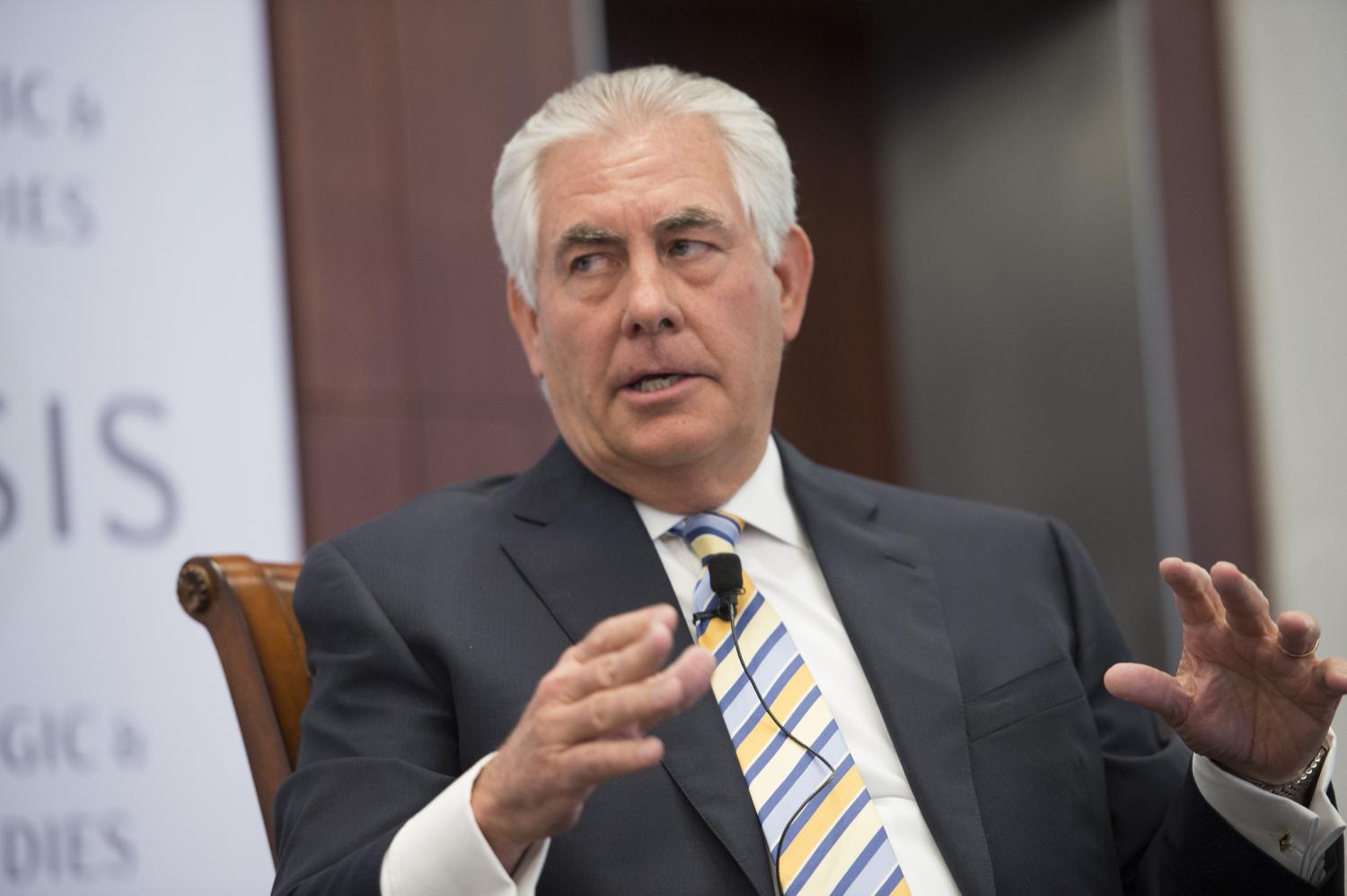
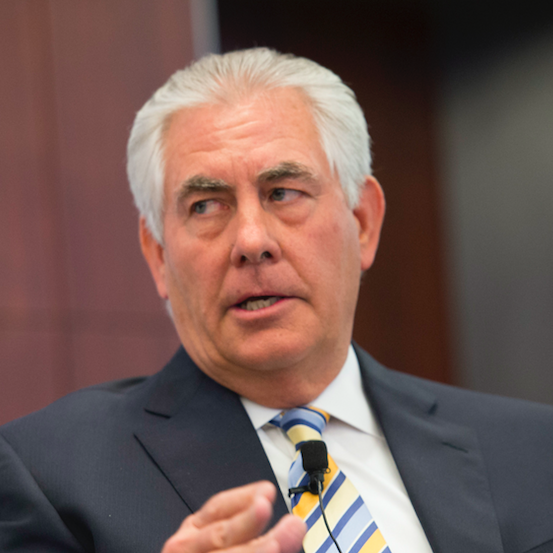
Shareholders can make a difference- as in this college student who took it upon himself to take on Exxon by launching his own investor advocacy campaign.
Previously published on Green Money Journal.
I rose to the podium, looked then-CEO Rex Tillerson of Exxon in the eye, and spoke. “Why does Exxon fund climate-denying organizations, when you publicly support a carbon tax?”
Tillerson deflected the question at the time: “we would never impinge on ALEC’s free speech.” D’oh. Two years later, in July 2018, Exxon ceased funding ALEC, the climate change denying organization I had highlighted. Who was I? Just a college student with a tiny amount of stock, who took it upon myself to write a shareholder resolution. Socially responsible investors, including Zevin Asset Management and Walden Asset Management, helped me get on that podium at Exxon’s annual meeting. “Holy cow, more people can be doing this!”, I said to myself. So I co-founded Stake, because I saw that David could beat Goliath.
Your stake
Stake organizes shareowners around petitions. At yourstake.org you can sync with your investment account and use your shares to Ask a company or mutual fund to improve. With a few clicks, you can support Asks like this one for Vanguard to support corporate political spending disclosure.
Stake has a not-so-secret sauce. We pair popular Asks with Champions – socially responsible fund managers who negotiate with the company management on behalf of all the individual shareholders who want companies to change their business practices.
Again and again, Champions lead the charge in getting companies to protect all workers from discrimination, remove firearms from grocery store shelves, and limit financing of coal power plants. My Champions, Walden and Zevin, can now be yours through Stake.
Now, Stake can be your podium.
How I got here
I studied physics, so I usually like numbers. But the climate change numbers terrify me. Four years before my encounter with Tillerson, as a wide-eyed college freshman, I read the Stern Business School review on the economics of climate change. One-sixth of the world could face threats to their water supply. Hundreds of millions of people could be left without access to sufficient food. And the World Bank said that to have any chance at avoiding a climate disaster, annual emissions have to peak by 2020. That number, 2020, stuck with me. Just a few years for the world to switch to the right path.
I immediately got to work, joining, and soon leading, Yale’s fossil fuel divestment campaign. The divestment movement brilliantly recognized that students could move large institutions towards climate action. Yale didn’t divest, but did commit to vote in support of climate-related shareholder resolutions.
So I took them up on it. I convinced a law professor to teach me how to write a resolution for a semester. I convinced my student investment fund to invest enough in Exxon to qualify for a resolution. I traveled from Connecticut to Texas to present at the annual meeting.
And we won.
Let’s build a movement of investors
When I was 18 years old back in 2012, the need for peak emissions in 2020 seemed an eternity away. But like the deadline for a final paper, it’s coming fast and there’s a long way to go. The Paris commitments aren’t nearly enough to achieve climate stabilization, and we’re already failing to meet them. That said, the mainstream is shifting. Corporations, after all, fought for the U.S. to stay in the Paris Climate Agreement, and almost won.
Shareholders already have the power to influence their companies by writing resolutions or voting on annual proxies. But almost no one uses that power. Most people literally throw their proxy ballots in the trash! While proxy votes aren’t binding, companies care about what their shareholders care about.
At the same time, individuals have had no formal channels to communicate their values to their fund managers. Vanguard could do more, but it “does not hear from many of its 20 million investors on governance." Not yet, at least.
Stake allows mass shareholders to organize around the issues that matter most. Any issue, not just ones that pass SEC ordinary business restrictions. Any time, not just at the annual meeting.
When we watch our early Stake users look under the hood of their investments, we witness epiphany. People see that there’s an Ask for a company they own to cut its ties to genocide, or stop denying climate change, and want to do more than just click support. They want to build the movement, and they want to invest in a better world.
Let’s build a movement of individual investors, holding corporations accountable to social good.
Image credit: CSIS
As Sea Level Rise Threatens Florida, University of Miami Launches Graduate Sustainability Program


The University of Miami rolled out a new graduate program offering the first degree in sustainable business in the U.S. that is also certified in STEM.
With Miami facing “an existential crisis” due to rising sea levels and other impacts of climate change, students who enroll in University of Miami Business School’s new Master of Science in Sustainable Business will have a front-row seat to one of the biggest environmental and infrastructure challenges of the 21st century.
“The idea is for the city to be a laboratory,” University of Miami Business School Vice Dean Patricia Abril told TriplePundit. “Capstone projects will allow students to work with companies that are experiencing first hand the impacts of climate change.”
In South Florida, climate change is poised to inundate low-lying neighborhoods and exacerbate social inequities such as income disparity, lack of public transportation, and limited affordable housing, according to the Sierra Club.
The city’s huge hospitality and cruise industry will also take a hit and some argue that Florida’s travel sector is not ready for the dramatic effects of climate change.
“Let’s call this what it is—a business problem. And let’s prepare our students to be part of the solution,” Abril said.
Focus on STEM
The University of Miami’s new program is the first degree in sustainable business in the U.S. that is certified in STEM—science, technology, engineering and mathematics. Courses will be taught by faculty from the university’s Rosenstiel School of Marine and Atmospheric Sciences.
Other institutions lay claim to the STEM designation as well. DePaul University’s Kellstadt Graduate School of Business in Chicago has offered an MS in Sustainable Management since 2012 and it was designated a STEM program in 2017, according to Assistant Dean for Marketing and Communications Robin Florzak.
“We saw a need and increased demand for talented leaders who understand both business and sustainability, especially with a rigorous grounding in science,” Abril said. “We want them to know more than the buzz words when they graduate.”
The University of Miami joins a host of other institutions in offering graduate sustainability programs. The website studyportals.com lists over 130 sustainability master’s programs in the U.S.
Training CSOs of the future
But while some of these programs offer a concentration in sustainability, those who designed this University of Miami Business School program say this one is exclusively focused on sustainability.
“The goal is to train the chief sustainability officers of the future,” Abril told TriplePundit. “When you say sustainability, a lot of people focus on the environment, and that’s an important part of it. But just as important are the social, ethical and governance impacts of business. And that’s what we’re focused on.”
“Sustainability is moving beyond the traditional sustainability officer to all facets of business,” University of Miami Economics Professor David Kelly said in announcing the new program. “Accountants are integrating environmental and social performance metrics with traditional financial reporting. Supply chain managers are working to green their supply chains. Trillions of dollars of assets are now invested in socially responsible portfolios.”
Fast-growing profession
A 2015 Harvard Business Review study showed that the number of companies with full-time sustainability officers doubled between 1995 and 2003, and again between 2003 and 2008.
According to Abril, those figures should double again, as the U.S. Department of Labor projects growth in the field that is significantly faster than the average when looking across an array of sustainability occupations.
“That’s coupled with the fact that the earnings average for sustainability professionals will range higher than average,” Abril said, “from the mid-$60,000 to more than $150,000.”
Sustainability master’s programs are pricey—the tuition for the University of Miami program is nearly $65,000, although Abril said that financial aid is available. But the prospective income may prove enticing for some who are considering the investment.
"Any business school that is not infusing sustainability throughout their program is doing a disservice to their students, since sustainability is now widely recognized as critical for successful organizations, public or private, for-profit or non-profit," Maureen Hart, executive director of the International Society of Sustainability Professionals told Greenbiz.
The deadline for applications for the Miami Business School’s MS in Sustainable Business is March 15. The first class will begin studies in August 2019.
Image credit: Matthew Paulson/Flickr
The Future of Work in Rural America


Rural America, with its large-scale agriculture and natural-resource converting mills, has long been at the forefront of automation - but 21st-century challenges are mounting, from Alabama to West Virginia.
Think about a job in rural America. What do you imagine? A farmer seated at the wheel of his John Deere? A logger, in hardhat, headed to the woods with a chainsaw?
What if I told you that the John Deere tractor was largely self-driving thanks to a GPS system developed in part with NASA’s Jet Propulsion Laboratory? Or that instead of a chainsaw, the logger is seated at the helm of a tree-felling machine that requires skill akin to piloting an airplane?
Rural America, with its large-scale agriculture and natural-resource converting mills, has long been at the forefront of automation. While driverless cars are regularly making the news now, driverless tractors have been in use for 15 years and mills rely on precise computer-driven equipment to turn raw wood into a variety of goods with minimal waste. These rural businesses largely churn out commodity-based products, meaning that a slight edge in production speed and output could make a huge difference in the success or failure of a business, particularly in a global market. For many rural businesses, the question of survival is simple, embrace technology or die. The answer, however, is not always as easy and requires access to flexible and favorable capital to make the large expenditures of implementation possible.
Making “working the mountains” safer
In West Virginia, loggers have worked the woods for decades with chainsaws, bulldozers, and woods tractors called “skidders.” On the steep hillsides of the Appalachian Mountains, this means little protection for workers from falling or sliding trees, making it no surprise that the Bureau of Labor Statistics identified logging as the civilian occupation with the highest rate of fatal work injuries in 2015. It also contributes to logging’s reputation as a dangerous and difficult job and limits the industry’s ability to attract new or younger employees.
The Lyme Timber Company LP, a timber management organization with a track record of sustainable management, is working with its logging contractors to bring winch-assist, or tethered logging, technology to Appalachia. With this technology, which is new to the Eastern US, enclosed cab machines that mechanically harvest trees are tethered by cables to an anchor machine at the top of the slope. This provides support for the harvesting machine to remain upright on the hill and protects workers within the cab. A traditional, hand-felling logger might earn $15-18 per hour for a high-risk job, but the logger at the helm of a winch-assisted felling machine has extensive training, greatly reducing his or her risk of injury, and can earn substantially higher wages.
This technology, however, comes at a cost. A single harvesting operation requires a capital investment of $3 to $4 million and productivity with the system requires several months of training. Costs are typically borne by the logging contractors, who can find it challenging to secure equipment financing loans due to variable income streams and lack of personal collateral to serve as a loan guarantee. Lyme has committed to help its contractors access this technology by providing long-term contracts that offer the contractors a reliable income stream and paying for equipment training. To catalyze investments in this technology and demonstrate their potential for safety, productivity and higher wages, Lyme may capitalize a locally managed logging business. Lyme has been able to make these commitments thanks to the financial flexibility provided to the company through the receipt of an investment via the New Markets Tax Credit program, a federal program that incentivizes private investment in businesses located in or serving low-income communities.
Exploring new industries
Alabama has the second largest commercial timberland base in the U.S., with 23 million acres, and the forest products industry has historically played a major role in the state’s economy.
Yet a decade ago, as housing starts stalled in the wake of the 2008 recession and global competition increased, Alabama’s forestry resources were underutilized. So the idea that The Westervelt Company would develop a wood-pellet plant in central Alabama had everything going for it: a product designed for export, a location suited for easy transportation of local feedstock and finished goods, and a population that wanted to work, but was lacking in opportunities.
The pieces were all in place, but even with significant developer equity and bond financing by the state, The Westervelt Company couldn’t complete the capital stack necessary to afford the purchase and installation of the high-tech equipment needed for the plant. An investment incentivized by the New Markets Tax Credit program was the necessary catalyst to transition Westervelt’s plan from a good idea to a local economic driver that created at least 30 high-quality jobs at the factory, and supports a similar number of wood harvesters, truckers, and barge operators along the supply chain.
As Brian Luoma, President and CEO of The Westervelt Company said “We were excited about bringing a pellet plant to this region of the state, and our recent joint venture with Pinnacle Renewable Holdings reinforces our commitment there. Between Pinnacle’s industry expertise and our supply chain advantages, this plant has the potential to be a leader in the pellet industry and an important part of this community for years to come.”
Jordan Billups, a Team Leader at Westervelt Pellets explains, “I was born and raised here and can speak from firsthand experiences that the plant in Aliceville offers great employment opportunities for the community. Through my more than five years here, I have had the chance to grow, develop, and gain knowledge as a leader.”
The new rural job
Much has been said about how automation and technology has resulted in a reduction in the quantity of jobs in rural communities. However, much less attention has been paid to the fact that these same technologies, as demonstrated by Westervelt and Lyme Timber, have increased the quality of the jobs available (and in both companies’ cases, increased the overall number of jobs as well). The trend of technology enhancement is here to stay and, provided programs like New Market Tax Credits continue to make those technologies financially attainable, the result is clear: the future of rural jobs will not only be more productive on a per-capita basis, but will be higher-skilled, higher-paying, and safer. A win for rural businesses and workers.
Image credit: Evangelio Gonzalez/Flickr
Super Bowl LIII Commercials: A Tale of Two Technologies


During Super Bowl LIII, two standout commercials from Google and Microsoft took a different approach on how they harness technology for good.
If you believe Sunday night’s Super Bowl commercials, robots are taking over the world. Well, at least trying to, but failing at it.
Several articles yesterday and today have focused on the theme of technology, especially artificial intelligence (AI), in last night’s ads. Many ads made viewers laugh by focusing on what technology can’t do.
Two standout commercials from Google and Microsoft took a different approach: they highlighted how technology can encourage inclusion and opportunities for veterans and people with disabilities, respectively.
Google: “Job Search for Veterans”
Google’s ad in the second half of the game was simple, understated and powerful. In the spot, different codes – made up of letters and numbers – fill the screen. Narrator John Krasinski explains these letters and numbers may not mean much to most people, but to the 7 percent of Americans who “keep the rest of us safe,” these codes mean a great deal. Soon, the camera pans out to show more context for the codes – they are MOS or “Military Occupational Specialty” codes typed in military personnel files. The ad shows that by typing “jobs for veterans” followed by the MOS code, Google will give results for relevant civilian jobs.
The commercial is part of Google’s #ForWhateversNext initiative, which helps veterans find post-military job placement. According to Google, more than 250,000 members of the military transition into civilian life each year. To assist these veterans and their families, Google created the “jobs for veterans” search feature highlighted in the Super Bowl commercial. This feature is available not only on Google, but also on any recruitment site or job board using Google’s Cloud Talent Solution platform.
Focusing on veterans was an effective strategy for Google. In a January 2019 Morning Consult survey, 70 percent of respondents said they would be “more likely to have a favorable opinion of a company” that uses its Super Bowl commercial to advocate for helping veterans. This was more than any other social or political issue mentioned in the survey, including disaster relief, gun control, gender equality or civil rights.
Microsoft: “We All Win”
Microsoft’s Super Bowl spot expanded upon its popular “Reindeer Games” holiday ad, following a boy named Owen as he plays Xbox games with his friends thanks to the Xbox adaptive controller. In the Super Bowl commercial, Owen is one of several young video gamers featured. Like Owen, the other kids also happen to have limb differences or mobility issues that can make gaming difficult. The Xbox adaptive controller, however, is compatible with a range of joysticks, switches, wheelchair mounts and other accessories to help.
“No matter how your body is or how fast you are, you can play. It’s a really good thing to have in this world,” Owen says in the commercial.
Full disclosure: As the mother of a young boy with disabilities, this commercial hit especially close to home. I’ve seen firsthand the power of adaptive equipment for both communication and play, even in kids as young as one year old.
I wasn’t the only one touched by this ad, though. It came in third place in USA Today’s Ad-Meter reader poll this morning. Kellogg School of Management at Northwestern University, which ranks Super Bowl ads each year, gave Microsoft’s ad an A “because of its distinctiveness and emotional depth. The message was about how Microsoft is developing tools to help everyone win, such as a gaming device that helps people with disabilities play with more ease.”
Image credit: Microsoft
Dubai Revs Renewable Hydrogen Race to the Megawatt Scale


As Expo 2020 approaches, Dubai insists clean technologies such as hydrogen-powered fuel cells are in its future.
The dream of a low carbon economy powered by renewable hydrogen has been slow in coming, but it may reach a tipping point this year. Last month the U.S. launched a major new R&D initiative aimed at prioritizing hydrogen projects for commercialization. And in an even more dramatic move in the Middle East, last weekend the Dubai Electricity and Water Authority broke ground on a megawatt-scale demonstration project at the Mohammed bin Rashid Al Maktoum Solar Park in Dubai.
Interest in renewable hydrogen picks up
Hydrogen fans are known to wax enthusiastically over the advantages of hydrogen as an abundant, zero-emission fuel. However, fans of saving the planet point out that hydrogen is sourced mainly from fossil natural gas.
The good news is that renewable hydrogen is beginning to enter the picture, and the pace is picking up.
In 2016, Toyota launched a demonstration project in Japan, aimed at “splitting” hydrogen gas from water. The process is powered by an electrical current sourced from wind power, and the renewable hydrogen is going to power a fleet of 12 fuel cell fork lifts. So far, the project is hitting its goals, and the next step is a hydrogen fuel cell truck.
For the truck project, Toyota is building on an H2 initiative that launched in 2017 in California. In this project, renewable hydrogen from biogas will go to power fuel cell semi-trucks provided by the company Kenworth.
The U.S. startup Nikola is even more ambitious. The company is marketing its own fuel cell semi-trucks and providing the renewable hydrogen as well. Its business plan includes a national network of fuel stations, many of which will have on site water-splitting systems powered by solar energy.
Nikola launched in 2016 and it has already expanded to include an energy branch focusing on solar. Meanwhile, the company’s truck division got a boost of adrenalin last spring, when AB InBev indicated that it would purchase up to 800 H2-powered semi trucks.
That’s quite a step up from forklifts in just two years.
The U.S. is also dipping into other heavy-duty transportation uses. In California, a fuel cell ferry boat is under construction, and across the Pacific in Hawaii, the U.S. Air Force repurposed a mobile hydrogen compression project to provide fuel for a range of vehicles including a 25-passenger crew bus, a MJ-1E fighter weapons loader and a U-30 heavy aircraft tug along with others. The Air Force project is in support of Hawaii’s 100% renewable and sustainable energy goal.
Oil producing state jumps into the renewable hydrogen field
The new Dubai Electricity and Water Authority (DEWA) project represents another step up in terms of ambition.
DEWA entered into an agreement with Siemens last year to accelerate the development of renewables such as solar and wind power in the region, by building the new demonstration project.
The idea is to demonstrate that hydrogen can be used to store and deploy other forms of clean energy for multiple uses, not just automotive fuel cells.
DEWA explains:
“The facility aims at testing and showcasing an integrated MW-scale plant to produce hydrogen using renewable energy from solar photovoltaic at the Mohammed bin Rashid Al Maktoum Solar Park, store the gas, and then deploy for either re-electrification, transportation or other industrial uses.”
The pressure is on to get the facility up and running in short order. DEWA intends to showcase the facility, along with fuel cell vehicles, at Expo 2020 in Dubai.
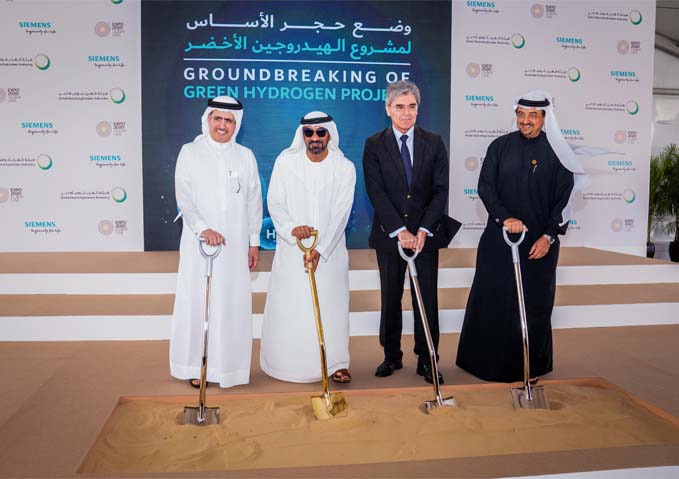
So far everything appears to be on track. In a statement released for last weekend’s groundbreaking, DEWA Managing Director and CEO Saeed Mohammed Al Tayer emphasized the central role envisioned for renewable hydrogen in the regional economy:
"This pioneering project is a role model for strategic partnerships between the public and private sectors. It will contribute to developing the green economy concept in the UAE and explore the potential of green hydrogen technology. The hydrogen produced at the facility will be stored and deployed for re-electrification, transportation and other uses.”
The transportation angle is especially interesting in terms of regional needs. Battery electric vehicles are beginning to go mainstream, but DEWA and Siemens are anticipating that hydrogen fuel cell electric vehicles will be better able to withstand high temperatures in Dubai and the rest of the United Arab Emirates.
Game on for renewable hydrogen
The European Union is another hot spot for renewable hydrogen's potential.
Just last fall, 25 EU nations endorsed a memorandum of understanding for a renewed burst of hydrogen development.
As with the DEWA project, the aim is to ramp up hydrogen R&D in multiple areas including energy storage, transport, power and heating.
The EU already has a running start on the competition in all three areas. In one recent development, Italy launched a demonstration project involving a fleet of three fuel cell buses.
An initiative to bring fuel cell trains to the EU is also beginning to bear fruit, though it’s unclear how the Brexit debacle will impact fuel cell adoption in the United Kingdom.
With Climate Change Linked Even More to Conflict, 4 Ways Companies Can Step Up
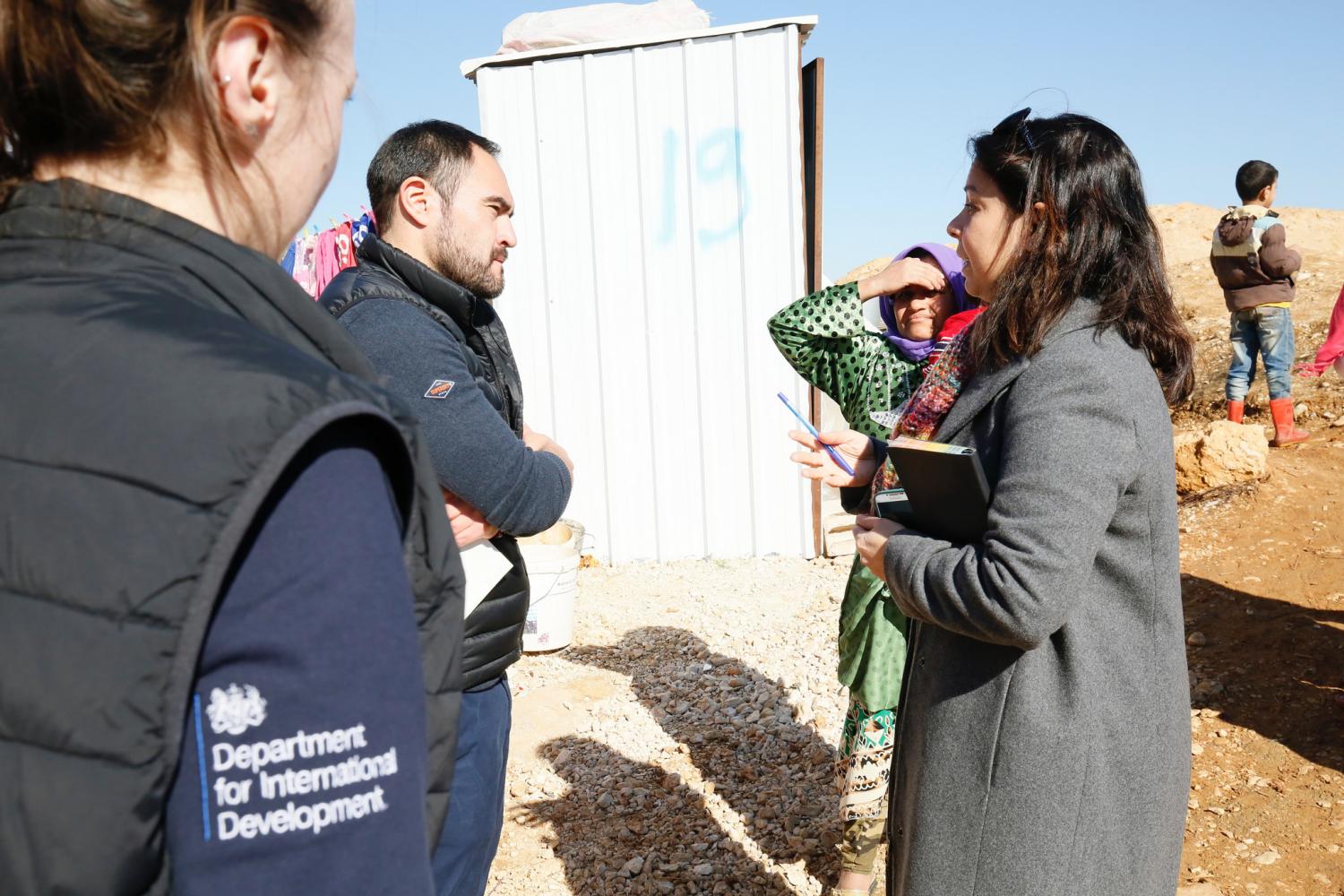

Humanitarian advisers from the U.K's Department for International Development talk to Syrian refugees in the Bekaa Valley, Lebanon, February 2017.
Many media reports have connected climate change to conflict in nations such as Syria along with crises including the surge (and resulting backlash) in migration across the Mediterranean Sea to Europe.
A recent study, however, adds some caveats to this conventional wisdom. A group of researchers found that on one hand, climate volatility played a key role in the spike of asylum seekers between 2011 and 2015 in countries affected by the Arab Spring.
Yet the same study warned that while there are anecdotal connections between climate change and asylum-seekers time and time again, what the researchers also say is this evidence suggests these patterns are limited to very specific time periods and contexts.
Previous studies have clumped climate, political factors and economic conditions together when studying drivers of migration, but “Climate, Conflict and Forced Migration,” at least to these researchers’ best knowledge, is the first to isolate climate’s direct role as a driver of migration and conflict.
The study also discusses the common links popularly associated with climate change’s effects on conflict and migration in the form of a feedback loop. Though a warming climate cannot often be solely blamed for crises, it can be a catalyst that can cause regional conflicts and waves of migrations to escalate.
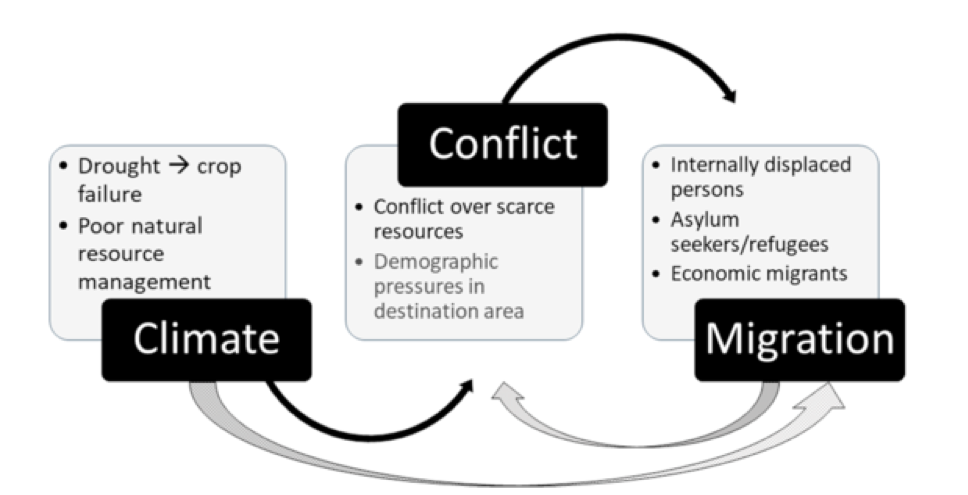
The researchers point to Syria as the cornerstone example of climate’s causal linkage to conflict and migration. Syria experienced one of the world’s worst anthropogenic (human-induced) droughts from 2007-2010, which drained the country’s groundwater supplies and devastated crop yields for several years. Food prices soared as rural families migrated to urban areas in droves. The urban population ballooned from 8.9 million to 13.8 million from 2002 to 2010, which added more stress on infrastructure, economic resources and social services. The Assad government, which mismanaged and exacerbated the effects of the drought through poor governance and unsustainable environmental policies, responded to the Syria’s political unrest with violence.
Therefore, the case can be made that a warming climate was among the first dominoes to spark the humanitarian crisis in Syria, which has led to an estimated 400,000 deaths, 5.6 million refugees and 6 million internally displaced persons.
And the dominoes continue to fall. As the refugee crisis swells, asylum seekers face more and more barriers to entering neighboring countries. When responding to this week’s tragedy of two capsized boats killing at least 38 migrants leaving Djibouti for the Arabian Peninsula, the United Nations reported that six people die each day on maritime smuggling routes.
Nevertheless, despite this spate of horrific reports about the plight of refugees this decade, this study’s researchers concluded that climate change alone will not significantly impact migration. Companies that conduct business across the globe or have supply chains that could be affected by such trends, should take note.
“Climate change will not generate asylum seeking everywhere but likely in a country undergoing political transformation where conflict represents a form of population discontent towards inefficient response of the government to climate impacts,” the report reads.
In other words, “it takes a perfect storm,” as one of the study co-authors Raya Muttarak from the United Kingdom’s University of East Anglia told Bloomberg. The authors emphasize that, above all, political factors and country-specific contexts determine the linkage and causality between the climate-conflict-migration trinity.
So, what can companies who are interested in doing what they can to either prevent these migration trends, or assist these climate refugees once they settle in their new homes? We offer a few suggestions.
Start involvement early on in the process
During the height of the refugee crisis, Lucy Marcus urged European firms to be pragmatic and assist with the refugee crisis, as they offer those economies an “antidote” to the region’s low birthrate and aging workforce. But Marcus’ advice is applicable worldwide: “Becoming involved early in the process of assessment, education, and integration planning would allow the private sector to help shape policy from the outset, rather than complaining about the government’s failures after the fact,” she wrote in 2015.
Work with NGOs on the ground
It’s no secret that conditions in many of the refugee camps across the globe are dire, and will be the source of many long-term problems even if every refugee is safely repatriated or resettled. Organizations working with these refugee camps have the obvious needs, from food to medical supplies to clothing. But technology companies have and can continue to do their part; opportunities in education are plentiful as well.
Thoroughly examine your company’s supply chain
Whether your company is sourcing rare earth metals, agricultural products or is manufacturing goods in water-stressed areas, your company's supply chain could contribute to, or be threatened by, future climate volatility. In addition, there is always the chance that your supply chain could include factories at which former refugees are working under exploitative or abusive conditions; rigorous audits should be part of your company's process when vetting its supplier base.
Consider partnerships with cities, which are bearing the brunt of these migration shifts.
“Cities as host communities to refugees have the ability to address discrimination, integrate individuals into society, and provide refugees with the necessary tools to settle, writes Rebecca Root for Devex. “Without sufficient resources and assistance from the international community, progress may be stunted as hunger, poverty, and sanitation levels are put under strain.”
Examples of how the public and private sectors can work together include AirBnB’s past efforts to house refugees and those who were vulnerable to sudden changes in U.S. immigration policies; Chobani’s ongoing commitment to hire former refugees; and partnerships that offer opportunities for displaced citizens to learn new technologies or even have access to cell phones.
Image credit: DFID - UK Department for International Development/Flickr
Authenticity is Key Ingredient for Brands with Personality
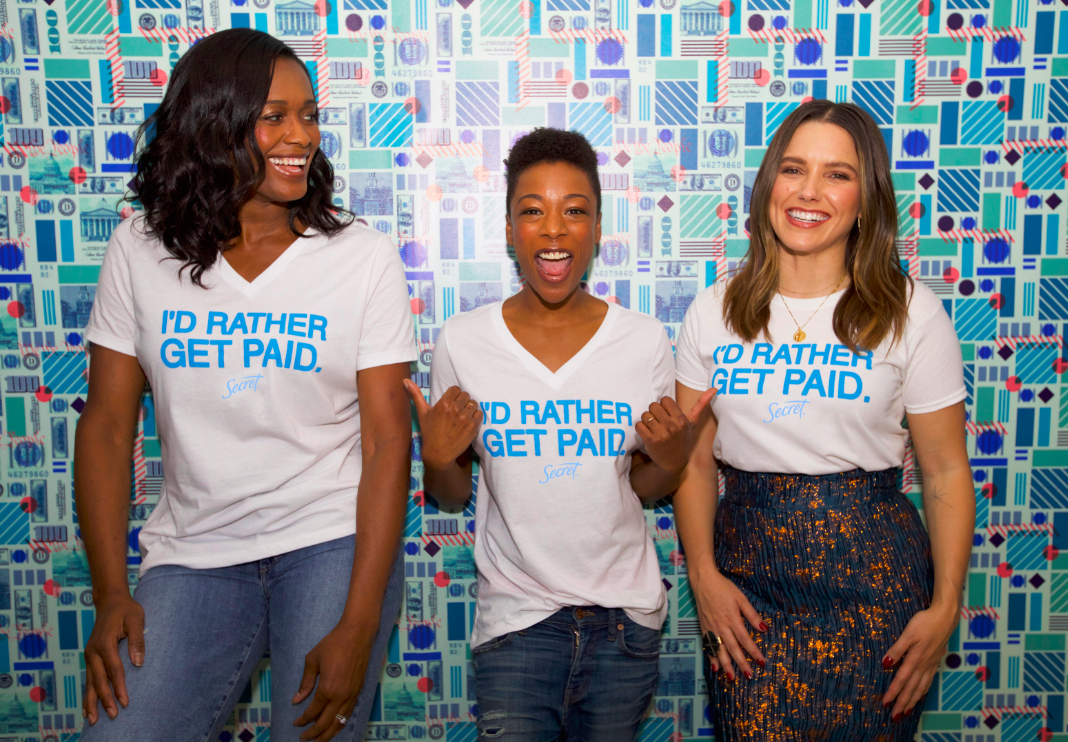
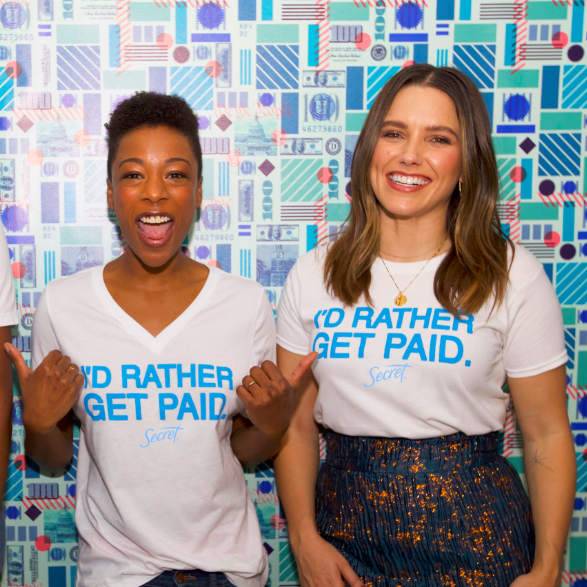
This week we'll attempt to answer questions over how brands can display a real personality and authenticity that consumers will want to buy into.
Now more than ever, we see “brands taking stands” – challenging both the status quo and their competitors. It’s a popular phrase, and an evolving idea in today’s social and political moment, not to mention over the past decade as corporate responsibility and sustainability has risen in prominence to the C-suite and beyond. In an upcoming webinar, we’ll be diving into the data to share what Nielsen knows about consumers’ sustainability preferences. There is far from one definition of sustainability--or one story of success--that truly encapsulates the full opportunity for existing and challenger brands.
Consumers tell us they look beyond the surface of the products they purchase to understand the brands behind them. Our research bears this out--consumers are putting their dollars where their values are, spending $128.5 billion in the U.S. in 2018 alone on sustainable fast-moving consumer goods (FMCG) products. Determining whether a brand aligns with your values often means more than a cursory look at the brand’s website or a glance at their Instagram page. Consumers are looking for more in the moment when they decide whether to go through with a purchase or not.
The transparency imperative
Our research has shown that transparency wins with consumers, but the imperative for brands to take a stand requires more than simple disclosure. This isn’t just about sharing your full list of ingredients but going deeper into how you source your products--and taking steps to actively support the workers who make that supply chain possible. It’s not just sharing your company’s diversity and inclusion performance but doing more to invest in a robust talent pipeline that connects across varied communities.
For these efforts to be truly authentic, following through on these commitments outside of the spotlight is even more important than what you communicate externally. In short, it’s imperative that brands who want to take a stand build these efforts on the bedrock principles of transparency and authenticity--with real investments to support both.
"People want to associate and buy from brands that stand for more,” said a consumer we interviewed at AdWeek 2018. “It's less than what people consider corporate social responsibility in terms of programs, and more brands that have a personality and stand up for something,” remarked another. This video shows additional responses from other consumers we recently interviewed.
But how can a brand display a real personality that consumers will want to buy into?
Brands with personality
Take Secret Deodorant's recent #IdRatherGetPaid campaign. Sure, the star-studded commercial features the product, but the content of the ad is far more than a programmatic showcase of the brand’s corporate social responsibility efforts. In fact, it doesn’t go into that level of detail at all--it’s not until you read about the efforts supporting the campaign that you realize how comprehensive Secret’s commitment is, including work with outside organizations to help women advocate for equal pay. Instead of sharing a rundown of Secret’s history of direct engagement, the ad showcases the brand’s personality by highlighting a broader social issue--and sharing useful information with consumers about that issue as well.
The piece also brings Secret’s own efforts into a sometimes-uncomfortable spotlight, as the narrator sings a line that reads as both an unfortunate social truth as well as a tongue-in-cheek joke that Secret’s in on. “I would rather make 20 more cents and get the same paycheck as gents than hear a song with a message in it that makes me feel better for three minutes.”
This approach is akin to Patagonia’s commitment to sharing its progress as a company. While Patagonia is often cited as a sustainability leader, the company website opts for transparency about their journey over accolades: “We can’t pose Patagonia as the model of a responsible company. We don’t do everything a responsible company can do, nor does anyone else we know. But we can tell you how we came to realize our environmental and social responsibilities, and then began to act on them.” Progress and authenticity win out over the illusion of perfection.
This all gets to another aspect of what consumers cite as important in all of this: core values, defined by one consumer as “what is important to [the brand], how they treat their workers, and how their product is made and created.” At the brand personality buffet, there’s no shortage of options for brands looking to showcase what they stand for.
Image credit: Procter & Gamble
New Venture to Measure Impact Investing Has Bono’s Star Power
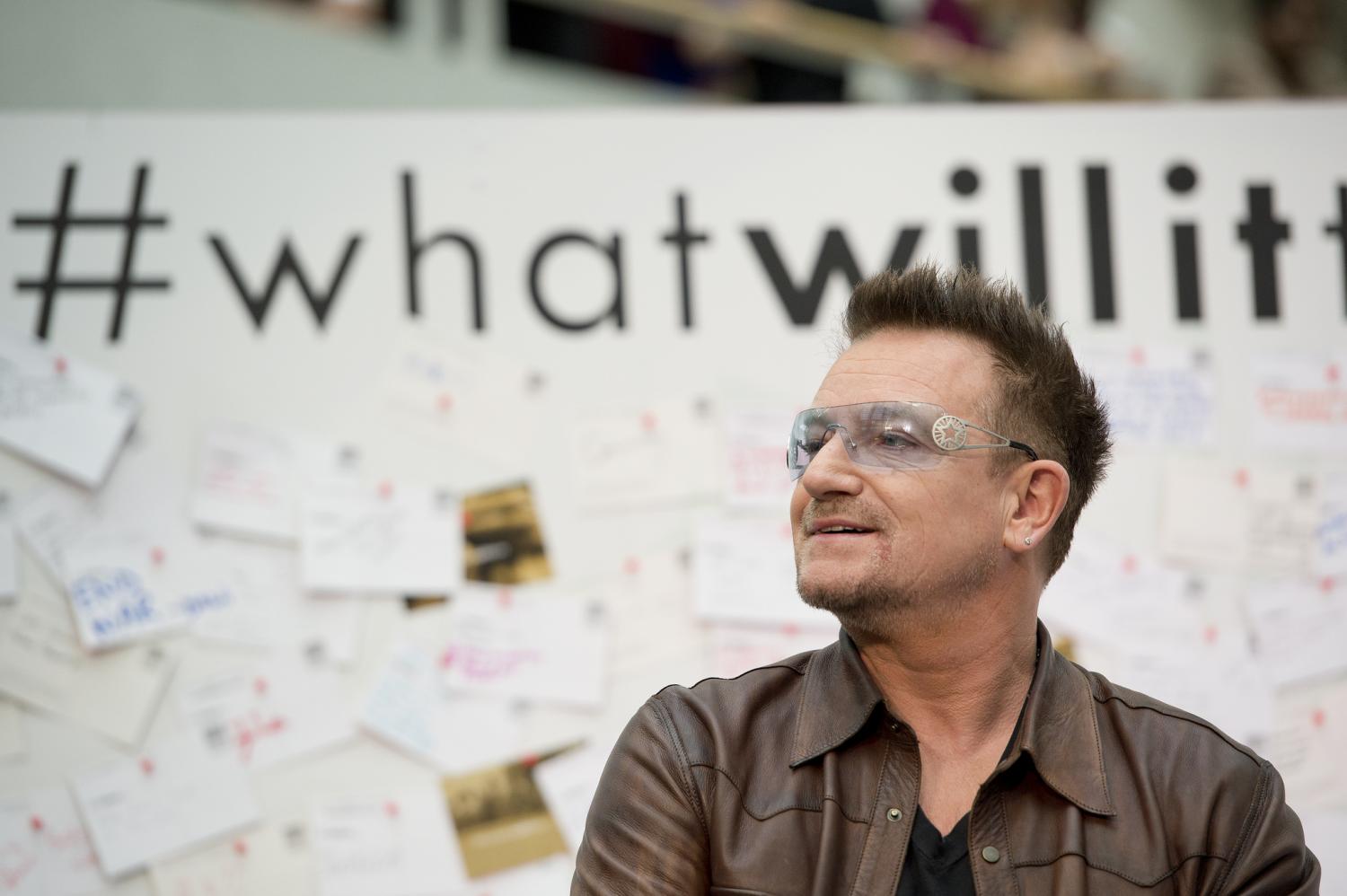
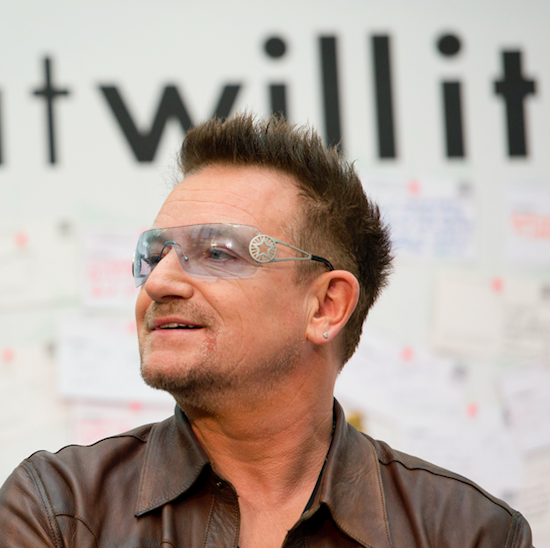
Bono is teaming up with private equity firm TPG to prove that impact investing can be measured in metrics that investors can understand.
Perhaps all that impact investing needs to go mainstream is the star power of a global celebrity; especially one who believes he has the answer to the industry’s holy grail—a credible way to show that the money is actually doing good.
Enter Bono, U2 frontman and global philanthropist. He is teaming up with private equity firm TPG to prove that impact investing can be measured in metrics that investors can understand. Getting that right will have big investors rushing in, they predict.
The new company, Y Analytics, launched last month at the World Economic Forum in Davos. Y Analytics says it will use third-party research to measure social and economic change created from investments and will act as an intermediary between researchers and investors.
“To persuade the biggest institutional investors to commit their funds to tackling some of the world’s most urgent challenges we need to be as confident about the impact returns as we are about the financial returns – fuzzy thinking just won’t cut it,” Bono said in a press release.
Catching up with industry’s growth
Y Analytics is an outgrowth of TPG’s $2 billion Rise Fund. It will be led by Maryanne Hancock, a former McKinsey partner, who said the group will build tools to predict, underwrite, and manage impact; the company will in turn share that knowledge with the public.
“We are building on the extensive effort of others, who have worked for decades to advance the world’s understanding of what creates impact,” Hancock said. “Enabling better decisions around how the world directs capital towards change will be vital in achieving the progress we seek to make.”
The need for reliable, credible, universal metrics to measure impact investing is becoming more urgent as mainstream private equity players enter the space.
The number of social investment funds has quadrupled over the past 20 years to 200, according to data from the non-profit Global Impact Investing Network, which estimates the industry is currently worth $228 billion.
Other private equity firms have turned to third parties like Business for Social Responsibility for help with impact measurements or use the third-party reporting framework The Sustainability Accounting Standards Board.
A mixed welcome
While Y Analytic’s venture into impact measurement is generally welcomed, at least publicly, according to investment news source Impact Alpha, some are privately critical that the Rise Fund is taking an approach outside emerging industry norms.
The critics, according to Impact Alpha, suggest that the Rise Fund’s method may cherry-pick positive outcomes without accounting for possible negative consequences.
Others credit TPG for elevating the importance of impact management among a more mainstream audience.
“A huge pain point”
The bottom line: If Y Analytics manages to come up with a better way to measure outcome, it will be welcome news to investors, for whom lack of reliable research on impact investing continues to be a hurdle.
"For those who need to make the case for impact investing to their trustees, this is a huge pain point," Institutional Limited Partners Association spokeswoman Emily Mendell told Business Insider.
Regulators, too, would welcome a credible way to measure impact of investments. Last month, the Organization for Economic Cooperation and Development called for more rigorous standards to prevent “impact washing” - where firms seek to disguise unpopular practices or overstate the impact of their investments.
Image credit: World Bank/Flickr